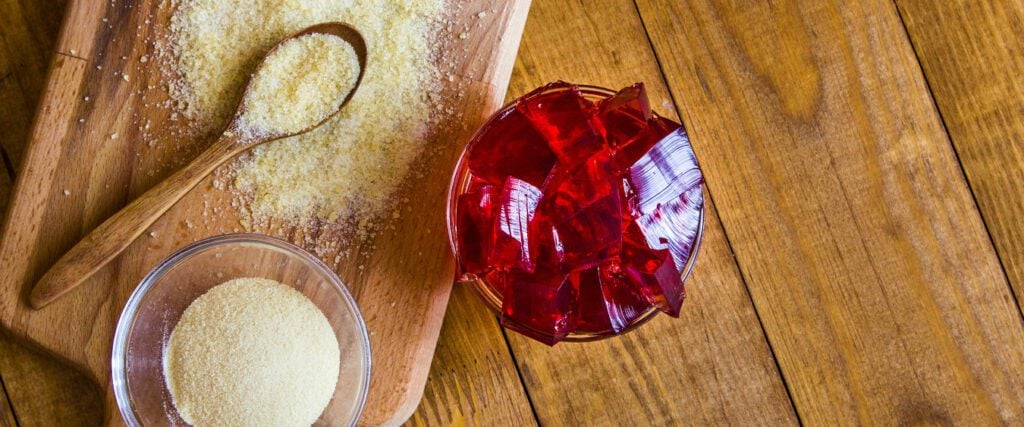Gelatin, also known as gelatine, is a transparent, colorless, and flavorless food that is derived from collagen that comes from animal body parts. It is brittle when it is dry but becomes rubbery when moist. But do you know how gelatin is made?
Gelatin is a group of peptides and proteins derived from the skin, bones, and connective tissues of animals such as domesticated cattle, poultry, pigs, and fish. It is often obtained by boiling animal carcasses.
The Process of Making Gelatin
Gelatin is manufactured from the connective tissues of calves and pigs, as well as decomposing animal hides and boiled pulverized bones. Slaughterhouses provide bones, skins, and tissues from animals. Gelatin processing plants are typically located near slaughterhouses, and gelatin factory owners frequently operate their own slaughterhouses where animals are slaughtered solely for their skin and bones.
When animal parts arrive at the food processing factory, they should be evaluated for quality and rotten pieces should be discarded. The bones and tissues are fed into chopping machines, which shred them into tiny bits. Cow skins are piled to the ceiling in a gelatin factory. In vats of lime, the skins are allowed to putrefy or cure, for about a month. The factory’s stink may be smelled for kilometers.
When the hides are mature, they are placed in acid vats, which dissolve the cow hairs, skin, and cartilage. Caustic lime or sodium carbonate are utilized as acids and alkalis. Type-A gelatin is produced from acid-treated raw materials, while type-B gelatin is made from alkali-treated raw materials. Many food products list type-B gelatin in their ingredients list to fool purchasers into thinking they’re eating the vegetarian option.
This is heated until it turns a white goo or gel after being rinsed in water. To remove the water from the gelatin solution, the gelatin is filtered, evaporated, dried, crushed, and then distributed to other companies. The skin and bones of the cow have now been turned into gelatin, a transparent, colorless, brittle, and flavorless solid substance. (Source: Britannica)
What Are the Other Uses of Gelatin?
The shells of pharmaceutical capsules are made of gelatin. Gelatin is also found in implantable medical devices as bone void fillers. It’s also found in ointments and lozenges. Gelatin is a binder found in match heads and sandpaper and is related to bone glue. In almost all photographic films and papers, it is employed to retain silver halide crystals in an emulsion.
Gelatin is also used in cosmetics under the name hydrolyzed collagen. Gelatin is also included in nail polish remover and cosmetics. To match a model’s natural skin tone, gelatin is frequently colored in various colors.
Some glossy printing materials, creative papers, and playing cards include gelatin. It keeps the wrinkles of crêpe paper in place. As a standardized media for testing firearms ammunition, blocks of ballistic gelatin resemble muscle tissue. It’s frequently utilized as a biological substrate for cell culture.
Non-animal gel sources such as agar-agar seaweed, carrageenan, pectin, konjac, and guar gum are alternatives to gelatin. They will not, however, be used unless you specifically request them. (Source: Britannica)
